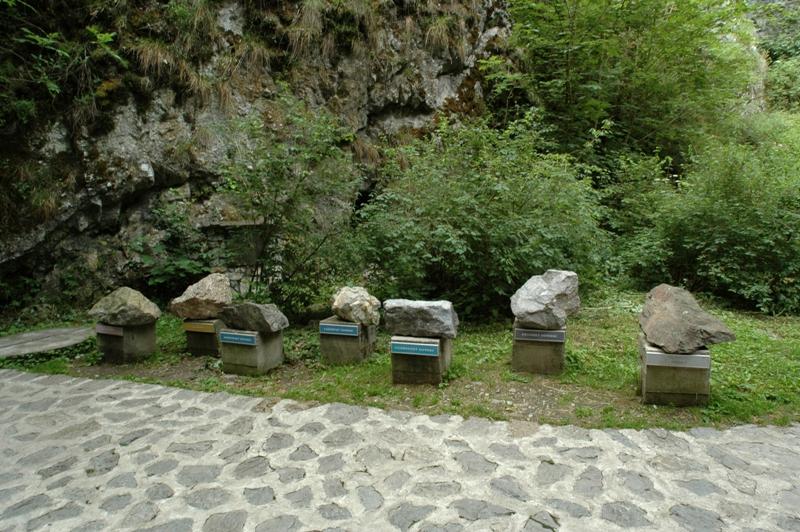Kateřinská (Catherine) Cave - characteristics
MORAVIAN KARST
It is the largest and most important karst region in the Czech Republic. It is situated north of Brno as a part of the Drahanská Highlands with an area of 94 km2 of Devonian limestones (width 3–5 km, length 25 km). Due to its hydrographic conditions, it is divided into the northern segment – the Punkva River System, the middle segment – the Křtinský and Jedovnický Brook System, and the southern segment – the Říčka River System.

CATHERINE (KATEŘINSKÁ) CAVE
-
The cave is situated in the northern part of the Moravian Karst, the Suchý žleb Valley, in the Vývěry Punkvy National Nature Reservation of the Moravian Karst nature reserve.
-
It is an exsurgence cave in the hydrographic system of the underground Punkva River. The areas known so far consist of two mighty domes with several side passages, chambers and chimneys.
-
The total length of all the spaces known today is up to 950 meters with a denivelation of over 60 m. The cave tour is 580 m long.
-
The Main Dome with the dimensions of 96 x 44 x 20 m is the largest natural underground space open to the public in the Czech Republic. There is a unique formation in the cave – Bamboo Forest. It is a group of narrow up to 4 m high stick stalagmites. The symbol of the cave is a stony formation called "Witch", lit by spot-lights of different colors.
-
The entrance corridor and the Main Dome have been known since time immemorial. In 1909, Professor Absolon's team discovered the continuation – the New Kateřina´s Cave. One year later, the whole cave was opened to the public.
-
Tour duration: 40 minutes.
-
Air temperature: 7–8 °C (46 °F), relative humidity: ca. 99 %.
-
The cave is a significant paleontological and archaeological site.

DEVELOPMENT OF THE KATEŘINA'S CAVE
In total, there are more than 1,100 caves and abysses in the Moravian Karst. They were formed by gradual erosion and corrosion activities of atmospheric water and recessing of its subterranean streams in tectonically disturbed and relatively soluble layers of Devonian limestones. The Kateřina´s Cave is probably the most significant part of ancient seepages of the Punkva River, even from the times when there were no Punkva Caves. After dereliction of the Tertiary Badenian marine flooding from the Moravian Karst, significant changes occurred to the karst underground streams.
The original direction of drainage to the Jedovnice hollow radically changed and karst waters began to cut the limestone massif to the Svitava River valley. This resulted, among other things, in today's largest hydrographic system of the Moravian Karst – the underground system of the Punkva River, of which the Kateřina´s Cave was once a part. In the following periods, especially in the Early Quaternary (Pleistocene), mighty breakdowns of ceilings happened in the underground, which formed today's appearance of the Kateřina´s Cave. And since it was once the underground route of the Punkva River, the existence of other large areas between it and the Macocha Abyss can be supposed. However, nobody has been able to get there so far, since the trails are cut across with a mighty tectonic failure and further progress is blocked by a dangerous and impassable cave-in.